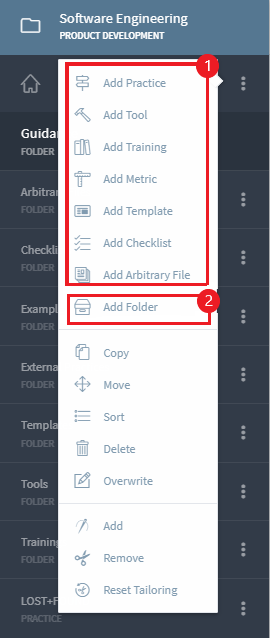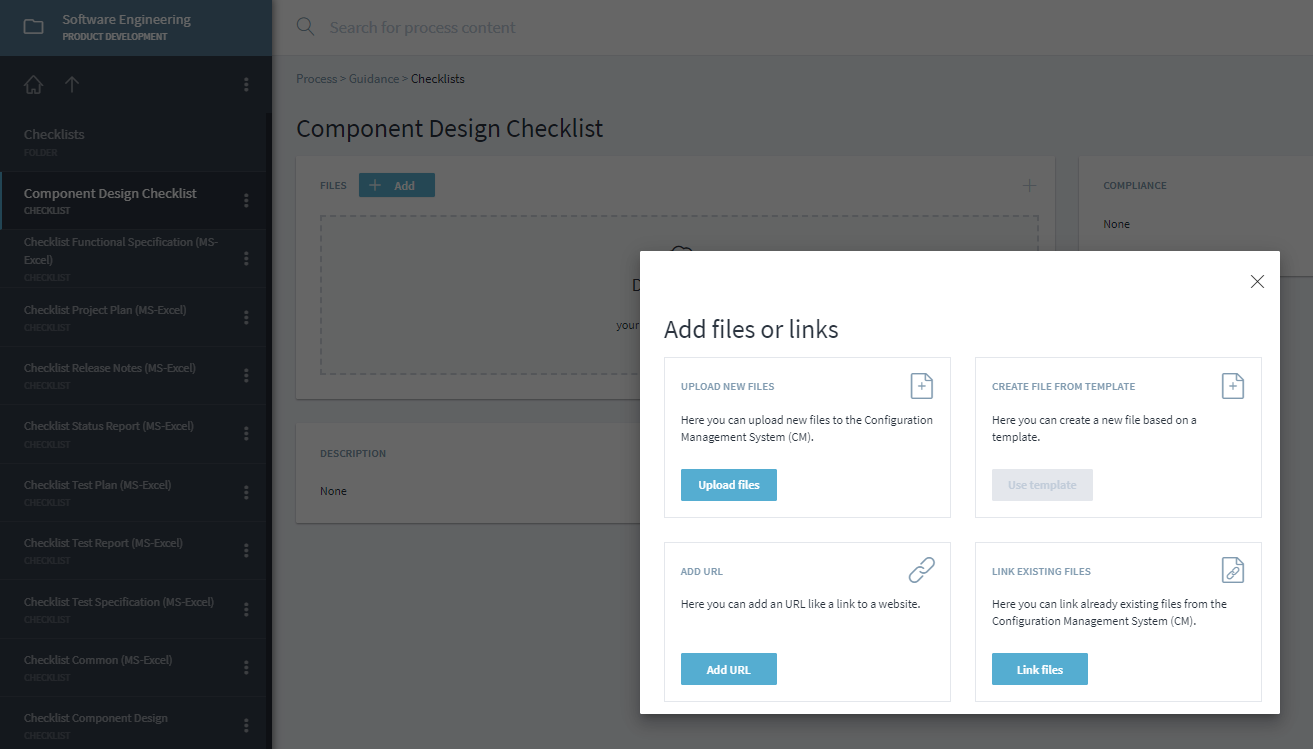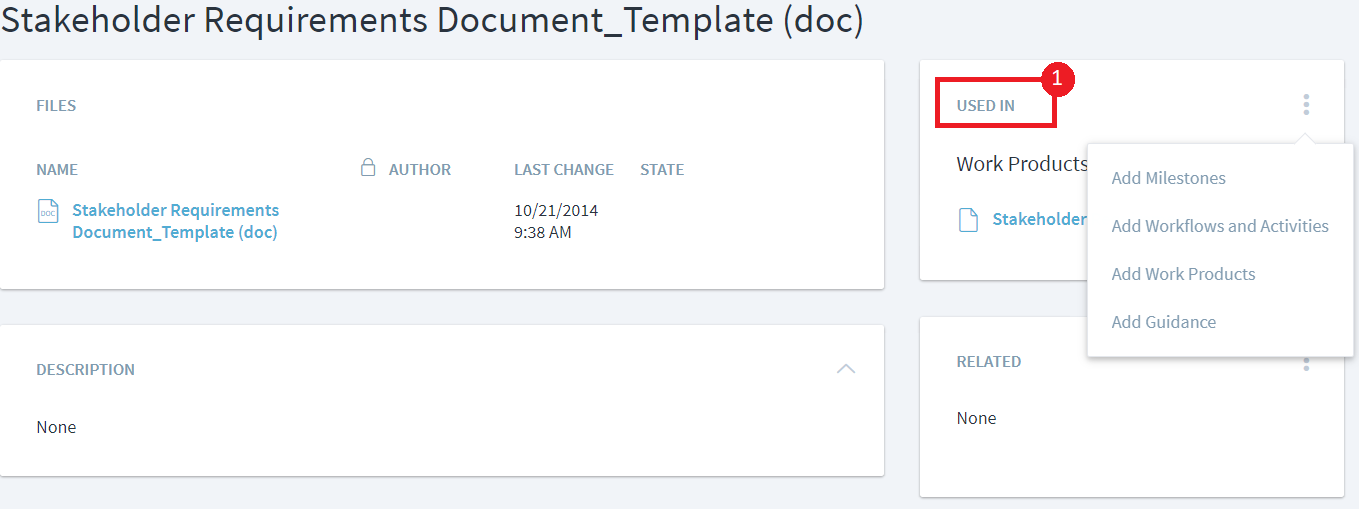Add Templates, Checklists and other Guidance Materials
Guidance material provides information on HOW to perform processes. It can come in different format such as templates, checklists, training, tools, or practices.
For a given activity or workflow, work product transforms from one state to another (e.g. preliminary to in review) and guidance material like Checklist can help to standardize the steps or Practice can help to enforce best practices to achieve this transformation in a work product. Hence, the recommended practice is to link guidance to work products.
Since the list of guidance material can grow overtime, it is recommended to organize such material in folders. For example, all templates can be stored under a folder called Template and they can even be further organized using sub-folders such as 'Program Management', 'System Requirements' and so on. Use your organization's standard practice, ease of navigation, as well as process architecture to determine folder structure and naming convention.
Creating and organizing guidance material
To create a new guidance material, navigate to Process and click or tap on Guidance. Next click on the three dots or plus sign and select the relevant guidance material type (Practice, Tool, Training, Metric, Template, Checklist, Arbitrary File) (1) .

When defining larger processes, you can organize the guidance material in folders for better readability. Folders can be created by selecting Add Folder option (2) . You can then create new guidance material in the folder; or can Move existing guidance material and Paste it in the folder of your choice.
Adding Files to Guidance material
Once you have created guidance, you can add files to the Guidance by either clicking or tapping on Add button or using the Drag & Drop or Browse function. Add option also allows you to add link using ADD URL option.
Guidance can be used as containter to specify type of Guidance (E.g. Template Project Plan) in a standard process. The projects that are instantiated using the standard processes can then contain the actual project specific files or URL.


